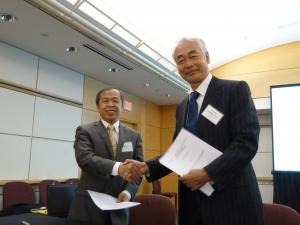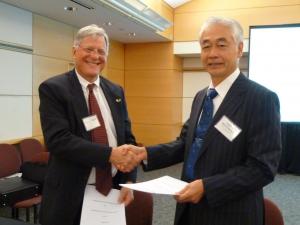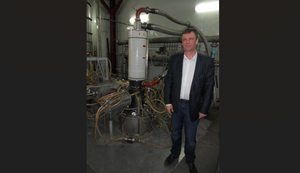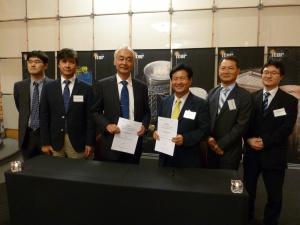80 percent of in-kind construction value under contract
The loads connected to PPEN are mainly large thyristors based AC/DC converters rated typically in the range from 5 to 90 MVA.
The second Procurement Arrangement signed in Washington concerned the low field side reflectometer. This diagnostic system will monitor electron density and aid in the assessment of fusion performance. Understanding and monitoring electron density profile evolution and density fluctuations is essential for assessing the stability of fusion performance inside a tokamak.
Wednesday, 20 June also witnessed the signature of the first of four Procurement Arrangements that are to be signed for the procurement of ITER's powerful 1MW microwave sources (gyrotrons). This week's Procurement Arrangement was signed with the Russian Domestic Agency, which will be providing 8 of the 26 gyrotrons installed on ITER. Each gyrotron generates roughly the equivalent of 1,000 microwave ovens in a relatively compact single tube roughly 2 m in height and ≤50 cm in width. The Russian scientific teams have extensive experience in developing gyrotrons of various powers and frequencies for research facilities around the world.
Last but not least, an amendment to the Procurement Arrangement on the vacuum ultra-violet (VUV) edge imaging spectrometer was signed. The primary role of the core survey VUV system is to monitor all impurities in the main plasma.





